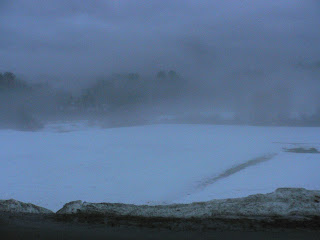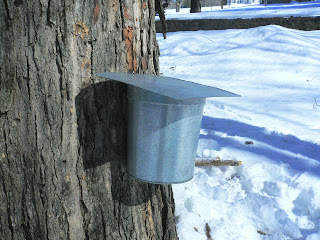 Students collecting sap.
Students collecting sap.As you can see from the above photos, sap collecting conditions have been less than ideal. On Monday we had snow for a good part of the day and then rain in the late afternoon. It was also the last day for the students, who go back to class tomorrow, so the crew will be much smaller going forward. Will be interesting to see how things go without them. Today was the last day for Mary, an alum, who was a joy and a hoot to have around. Thanks! The next few days look good in regards to weather conditions and sap collecting. It's been about 4 weeks since we first put up buckets, with a few more weeks to go.
Today, Anna (alum and fellow collector), asked which area or run was my favorite for collecting. I said Maloney, though I had to add that it was also my least favorite, as I managed to blow the transmission in one truck (it was only a matter of time) and get another stuck in that particular bush. It's actually two bushes and really the only ones that are in the woods. The other collecting areas are on the main campus of NMH, the old campus in Northfield, and in several peoples yards. Being in the woods is what I imagined a large part of sugaring would be about, and Maloney doesn't disappoint. I'll try to get a few photos.
You can find more info here and some photos here.














